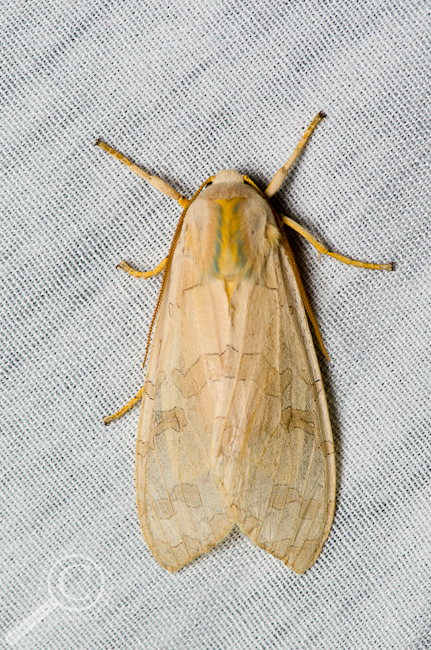While some common names are great descriptors of a moth’s biology, some can be rather deceiving. Take the Banded Tussock moth for example, which although banded, isn’t a true tussock moth! While the “true” tussock moths are in the subfamily Lymantriinae, this moth is actually a tiger moth in the Arctiinae. The larvae of this moth have large tufts of hairs that are reminiscent of those found on “true” tussock moth caterpillars, which is where the common name comes from. These tufted larvae can be found feeding on a wide diversity of deciduous trees.
Tiger moths are known for their ability to hear incoming sonar pings of bat predators, and some have even evolved sonic countermeasures. The Banded Tussock moth was one of the first moths shown to protect themselves from bats by emitting high-frequency sounds (Dunning & Roeder, 1965). Remembering back to my undergraduate Physiology classes, I recall there being 2 ways in which these sonic displays could deter bats: 1) as a warning that the moth was distasteful and the bat should move on to something more tasty (the acoustic equivalent to the bright colours found on many other tiger moths and insects), and 2) some moths emitted a frequency so close to the bat’s sonar that they could disrupt the bat’s orientation and become hidden in a curtain of sonic feedback. Which method this species enlists I’m not sure, but I find it amazing that some moths have adopted such extreme defenses.
Of course, being loud isn’t going to save you from all potential threats, like the tachinid parasitoid Blondelia hyphantriae.
———————-
Dunning, D.C. & Roeder, K.D. (1965). Moth Sounds and the Insect-Catching Behavior of Bats, Science, 147 (3654) 174. DOI: 10.1126/science.147.3654.173


[…] Banded Tussock Moth – Halysidota tessellaris #NMW2012 » Biodiversity in Focus Blog. […]